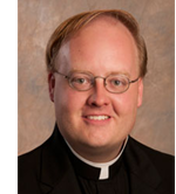|
In last weekend’s bulletin, I shared information on the new St. Mary’s Visitation Purgatory Society – designed to encourage us in praying for those who have died, not only in the month of November in which it is a particular focus of the Church, but all year long. This November we are praying in particular for the intentions of those members of St. Mary’s who have died over the past year. In other months, intentions will appear in the bulletin to help guide our prayers. How beautiful would it be if we, as a parish, regularly prayed for the dead! In speaking of Purgatory, I thought it may be helpful to reprint something from last year, laying out the Church’s teaching in order to help us understand this important doctrine of the Church.
The Catechism of the Catholic Church states that “All who die in God's grace and friendship, but still imperfectly purified, are indeed assured of their eternal salvation; but after death they undergo purification, so as to achieve the holiness necessary to enter the joy of heaven. The Church gives the name Purgatory to this final purification of the elect, which is entirely different from the punishment of the damned. The Church formulated her doctrine of faith on Purgatory especially at the Councils of Florence and Trent. The tradition of the Church, by reference to certain texts of Scripture, speaks of a cleansing fire…” (CCC #1030-1031). We see here then that there are two important elements to keep in mind as we consider the Church’s doctrine on Purgatory. The first element is the reality of the effects of sin. Sin has its effects even once the sin itself is forgiven – there is still a debt that must be repaid even if the sin itself is forgiven. This notion is what underlies our understanding of the need to do penance for sin – even sin which has been forgiven. Over the course of our earthly lives, through prayer, sacrifices, acts of charity, etc., some of that debt is repaid. If, upon death, there is still some of that debt to be paid, it is paid for in purgatory. Perhaps we can liken it to a scar that one bears from surgery. The surgery deals with the illness or sickness, but the scar remains afterwards. If we use this analogy we can see that God’s mercy forgives the illness and sickness of sin, but a scar still remains, a scar which is then healed in Purgatory. The second element underlying the Church’s doctrine on Purgatory is the reality that we must be prepared and finally purified in order to see the face of the living God. In this sense then we can see Purgatory as the foyer of heaven, where the soul that has died prepares to encounter God Himself – anything of sin is removed so that one can enter into God’s sight in purity. Following from this, then, is our understanding that the prayers of those on earth can assist those souls going through this process of purification, we can, in effect, help make up for some of the debt that they owe from their own past sins – to repay a debt which is not ours in that sense. The Church goes on to state in the Catechism, “This teaching is also based on the practice of prayer for the dead, already mentioned in Sacred Scripture: ‘Therefore [Judas Maccabeus] made atonement for the dead, that they might be delivered from their sin’ (2 Maccabees 12:46). From the beginning the Church has honored the memory of the dead and offered prayers in suffrage for them, above all the Eucharistic sacrifice, so that, thus purified, they may attain the beatific vision of God. The Church also commends almsgiving, indulgences, and works of penance undertaken on behalf of the dead: Let us help and commemorate them. If Job's sons were purified by their father's sacrifice, why would we doubt that our offerings for the dead bring them some consolation? Let us not hesitate to help those who have died and to offer our prayers for them” (CCC #1032). The greatest prayer that can be offered for someone who has died is the Mass. This is why we have Mass Intentions – the Mass Intention is the person for whom the Mass is being offered, when they are someone who is deceased it is to aid them in Purgatory. It is a noble and beautiful thing to have a Mass celebrated for one who has died. There is usually a monetary offering that is given to the Church when a Mass is requested. If you would like to request that one of your own loved ones be an intention at Mass, please contact the Parish Rectory where those are scheduled. Praying for the dead is one of the Spiritual Works of Mercy and is one that we particularly focus in on during the month of November. In the next few bulletins you will find prayers that can be offered for those who have died as well as a few prayers that we can pray for ourselves, so that, when that moment comes, we are ready. |
Fr. PeterArchives
June 2023
Categories |
Join us at MassSaturday at 4pm;
Sunday at 7:30am, 9:00am, 10:30am Daily Masses: Monday-Friday 6:30am Tuesday/Friday 8::00am (school days only) Saturdays 8:00am Sacrament of Reconciliation |
|


 RSS Feed
RSS Feed
